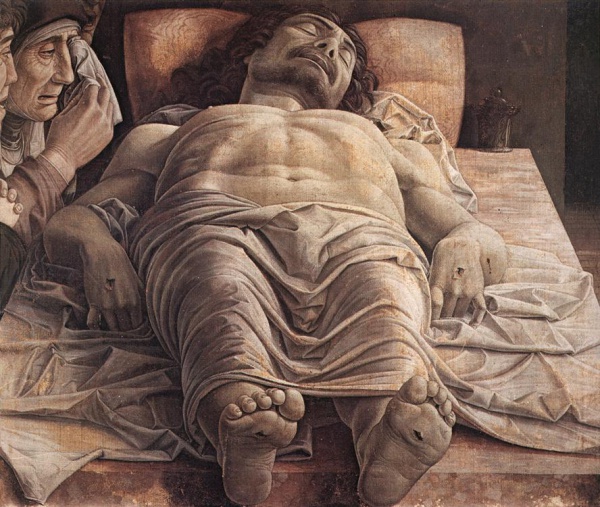Facts About Lamentation of Christ
"The Lamentation of Christ" is a captivating painting by the Italian Renaissance master Andrea Mantegna, likely created around 1480. Although the exact date is debated, it is generally believed to have been completed between 1475 and 1501, most plausibly in the early 1480s. This poignant artwork depicts the body of Christ laid on a marble slab, surrounded by the mourning figures of the Virgin Mary, Saint John, and Mary Magdalene.
While the theme of Christ's Lamentation was common in medieval and Renaissance art, Mantegna's interpretation is distinguished by his unique approach. Drawing inspiration from the "Anointing of Christ" Mantegna imbues the scene with a distinctive perspective. The painting is notable for its dramatic contrasts of light and shadow, which evoke a profound sense of sorrow. Mantegna's use of perspective intensifies the realism and tragedy of the moment, accentuating the anatomical details of Christ's body, such as his ribcage and the wounds on his hands and feet, in a manner that avoids idealization.
One striking feature of Mantegna's composition is its focal emphasis on Christ's genitals, a common element in depictions of Jesus from that era, which underscores the emphasis on his humanity. Mantegna's expertise in perspective is evident in his meticulous attention to detail, particularly in the foreshortened representation of Christ's feet.
It is believed that Mantegna created this painting for his personal funerary chapel. Following his death, his sons discovered the painting in his studio and sold it to settle his debts. Today, "The Lamentation of Christ" is housed in the Pinacoteca di Brera in Milan, Italy. This masterpiece exemplifies Mantegna's artistic genius and emotional depth in portraying this biblical tragedy.

 Vatican
Vatican